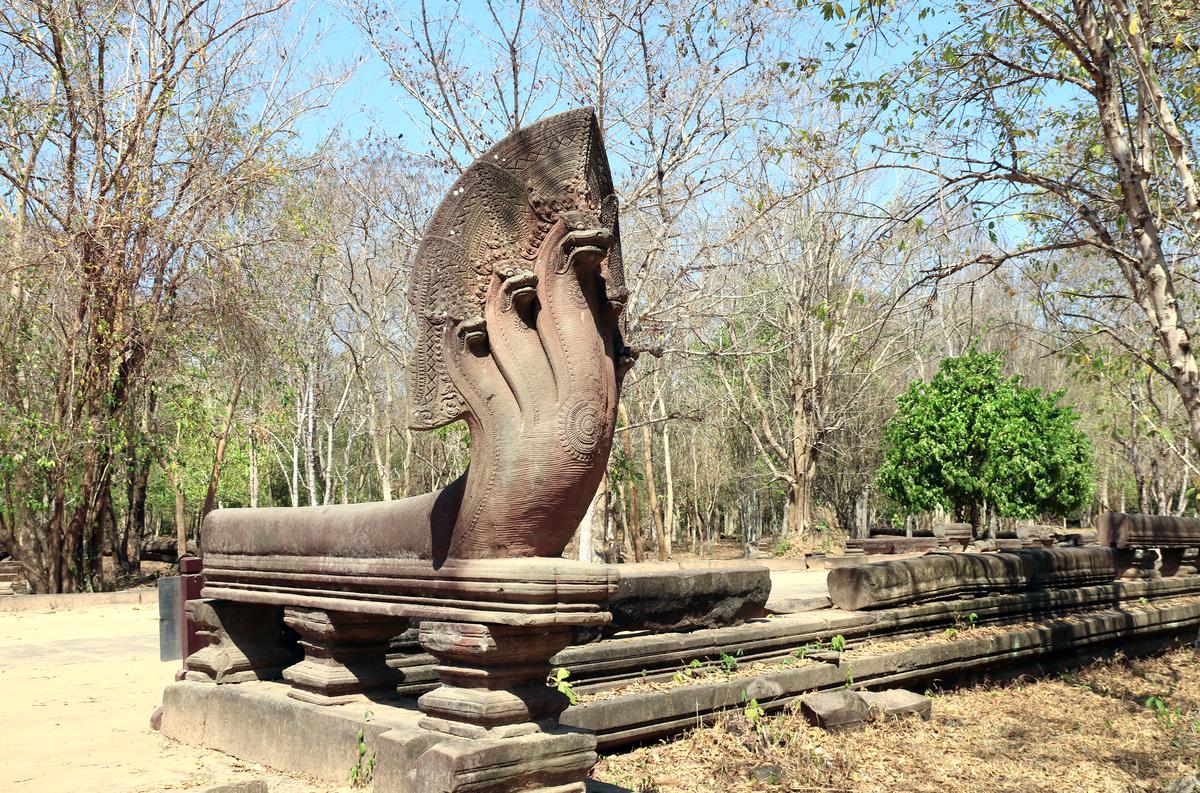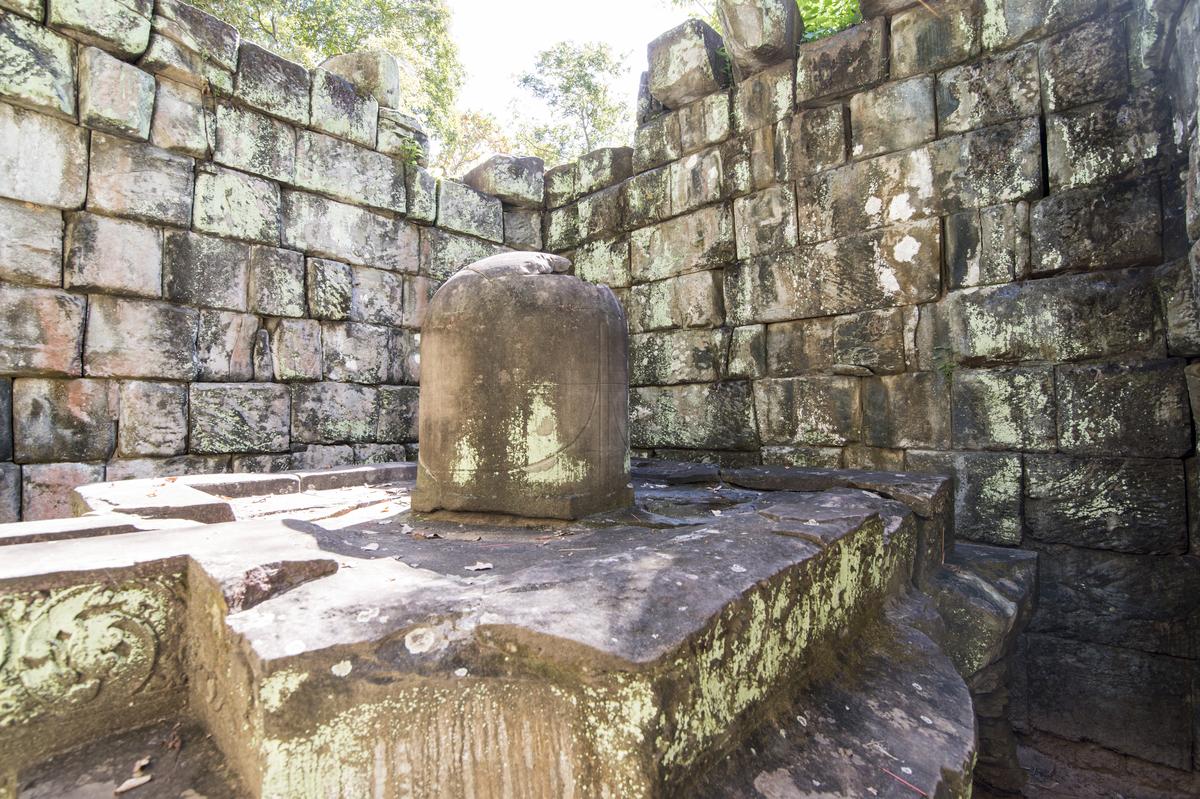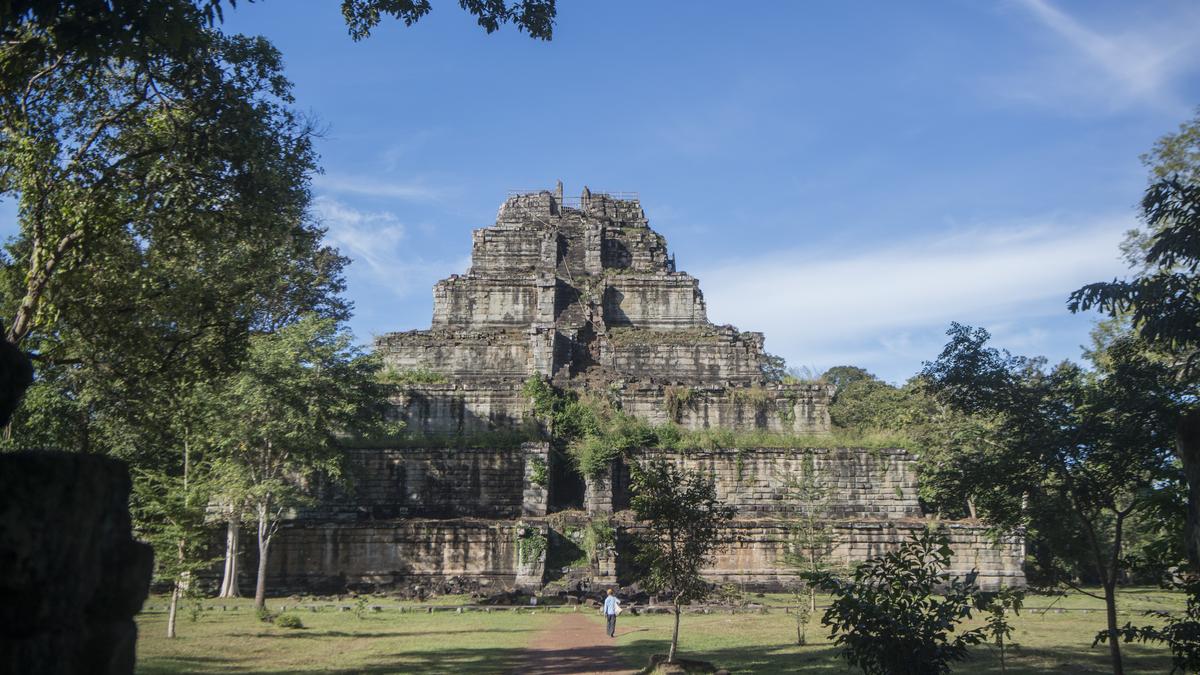A few decades before the Chola king Rajaraja I built the Brihadeeswara Temple in Tamil Nadu, around 1000 AD, a Khmer king called Jayavarman IV had begun building a temple to replicate the Kailasa mountain in Cambodia, at Koh Ker, complete with a tank that would replicate the river Ganga. It followed Tantrik principles of architecture, and a nearby river bed was covered with hundreds of Shiva lingas to transform the water into Ganga.
This was 200 years before the building of the now famous tourist destination Angkor Wat. The Shiva of Koh Ker is not some gentle yogi. He is a great god of kings, a god of power, a god of dominance, a Tantrik god.
Built in the 10th century CE, Koh Ker was for a brief moment the capital of the Khmer Empire before Angkor took over. Jayavarman IV was not interested in modesty; he wanted a capital that proclaimed power. So, he placed Shiva at the centre of everything. At Koh Ker, he built a massive seven-tiered pyramid called Prasat Thom. Prasat means ‘prasada’ or enclosure in Sanskrit, a common term for temples. It looks nothing like the curving shikhara of Indian temples. It looks like a step-pyramid, raw and imposing, more Mayan than Indian. But on top of it stood the linga of Shiva, rising like a cosmic pillar, visible from miles around.
The message was clear: the king was Shiva’s chosen, the axis of the universe had been placed in his capital, and his earthly representative. This is classic Deva-raja (God-king) cult, where the god and the king merge into one cosmic being. You can see why Jayavarman IV wanted Koh Ker as his capital. It was propaganda in stone.
Shiva as an empire
Around this pyramid, the site was filled with dozens of Shiva temples. Archaeologists have counted more than 180 sanctuaries scattered across 80 square kilometres. Many shrines were built to house lingas, each named with cosmic attributes: Prasat Krahom, Prasat Pram, and so on.

Statues of multi-headed serpents or nagas in the Koh Ker complex
| Photo Credit:
Getty Images
The sculptures from Koh Ker are stunning. Some of the finest images of Shiva’s sons, Skanda and Ganesha, come from here. The most impressive is one of Skanda seated on a peacock, a rare Cambodian image. Another famous image is of Shiva playing with baby Skanda, and it is never clear if this is a representation of a god or the king. Then there are fragments of a massive five-headed, ten-armed dancing Shiva. Many sculptures were stolen and now housed in museums around the world.
What makes Koh Ker different from Angkor Wat is that here Shiva is clearly supreme. At Angkor, you see Vishnu cults rise, and later Buddhist domination. But Koh Ker is pure Shaiva power. The inscriptions are clear that Jayavarman IV’s devotion was to Tribhuvaneshvara, Lord of the Three Worlds, another name for Shiva. The architecture backs this up. Every stone, wall, and sanctuary announces Shaiva supremacy.

It is also worth noting how the Khmer kings reimagined Indian ideas. In India, the Shiva linga is often housed in dark sanctums. In Koh Ker, it is raised up in the open, high above on a pyramid. This is the god of kingship, not the god of hermits. Ellora’s Kailasa temple is carved out of living rock, but it hides the linga in the depths of a mountain. Chidambaram in Tamil Nadu is even more distinct. Its sanctum has no linga at all but an empty space with a hanging garland, symbolising Shiva as the cosmic dancer, subtle and unseen.
Koh Ker is the opposite of both — a 36-metre-high pyramid, rough blocks stacked in the jungle, carrying a Shiva linga at the top like a flagpole of the empire.
The audacity of a king
Today, Koh Ker is mostly in ruins. Tourists still prefer Angkor Wat, but anyone who visits the former feels the raw difference. Angkor is polished grandeur, with Vishnu, Shiva, and later Buddha all jostling. Koh Ker is blunt power: Shiva as an empire.

A Shiva linga at Koh Ker
| Photo Credit:
Getty Images
After Jayavarman IV’s death, the capital shifted back to Angkor. Koh Ker was abandoned, its grand pyramid left isolated in the jungle. The colossal linga that once crowned the pyramid is gone, probably destroyed or stolen. What remains is a ghost of Shaiva power.
But sometimes ghosts are more telling than monuments. Koh Ker shows us the audacity of a king who dared to centre the cosmos on Shiva, only for history to move on.
Devdutt Pattanaik is the author of 50 books on mythology, art and culture.
Published – October 18, 2025 08:04 am IST

